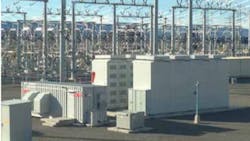Dispatching Storage: What Will Change in California in October 2016
A recent ruling by the Federal Energy Regulatory Commission (FERC) will be a great market driver to help increase the utilization of energy storage. The Aug. 16, 2016, ruling will allow the California ISO to include energy storage resources to “submit state-of-charge as a bid parameter in the day-ahead market and to have the option to self-manage their energy limits and states-of-charge.”
The ruling allows more accurate actual data on sources’ state of storage to be employed in dynamic bidding processes, rather than the prior, less accurate, assumed states of storage.
This development will certainly help the state to meet the mandated goal set by the California PUC, for 1,325 MW of energy storage to be installed by 2020. To put the 1,325 MW energy storage goal in context, note first that it excludes pumped hydro storage, the latest data from the DOE Global Energy Storage Database shows that pumped hydro energy storage makes up 3,967 MW, or 93.7 percent, of the state’s total 4,231 MW of currently operational energy storage projects. The goal to increase the 6.3% remainder, which currently equals 265 MW, to 1,325 MW by 2020, represents a 50% compounded annual growth rate, an admirably ambitious goal.
